Recording API sessions allows you to monitor and debug HTTP traffic between your application and the server. This can significantly improve debugging efficiency by providing insights into network behavior, as well as enhance testing workflows by enabling precise analysis of API interactions. With the Requestly Desktop App, you can capture and analyze network activity effortlessly. This guide will walk you through the steps to create, manage, and utilize API sessions effectively.
How to Create an API Session in Requestly
Creating an API session in Requestly is straightforward, allowing you to record, import, and analyze network traffic with ease. Here are three methods to get started:Save Captured Live Traffic with HTTP Interceptor
One way to create an API session in Requestly is by saving captured traffic using the HTTP Interceptor while monitoring a browser or an app’s traffic. This allows you to share or analyze the traffic later. Here’s how:1
Navigate to the Network Table
Open the Requestly desktop and access the Network Table.
2
Connect an App
Click the 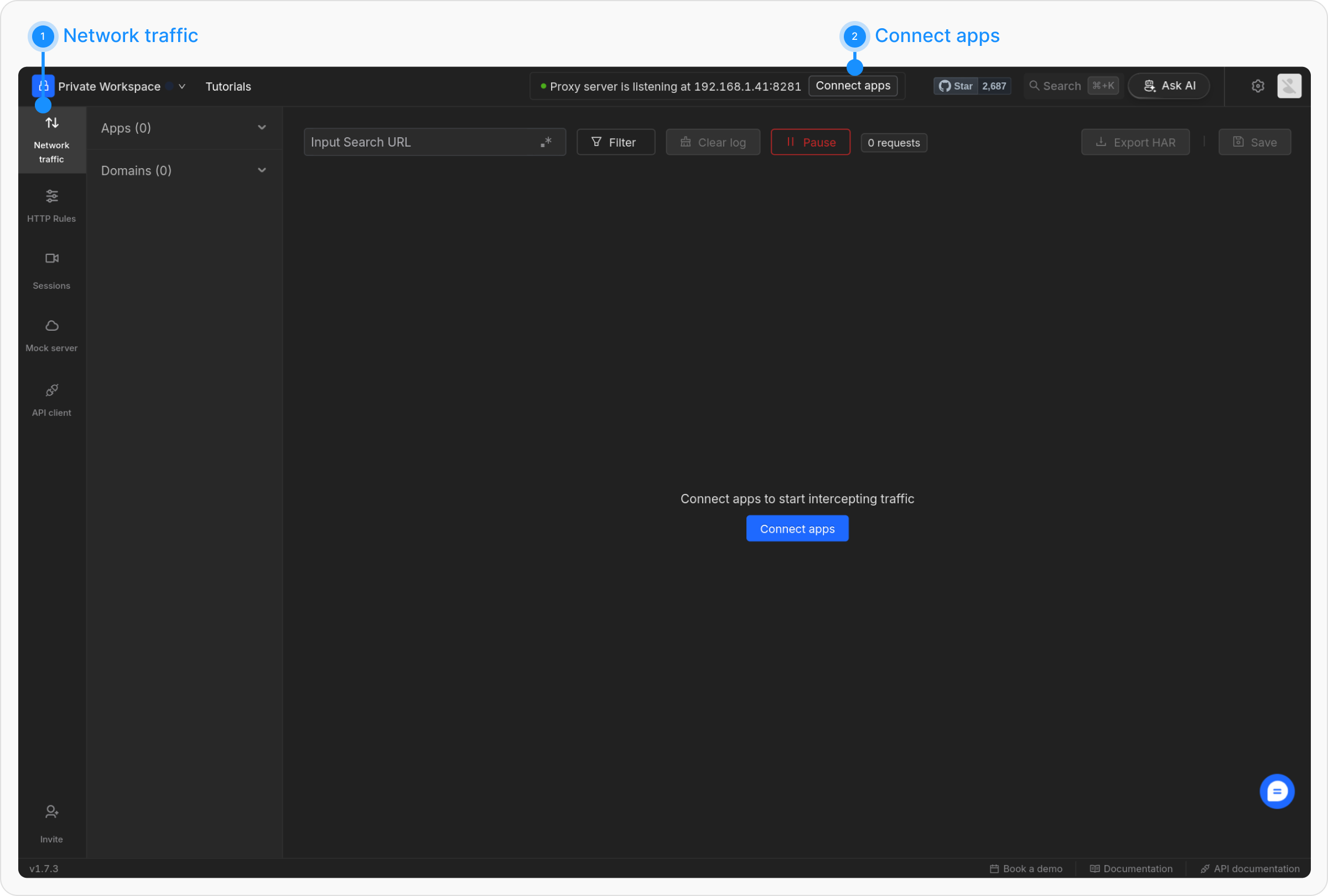
Connect Apps button
3
Select the Traffic Source
Choose from where you want to intercept traffic (e.g., browser, Android, iOS). Click Open/Launch for browser traffic and follow the instructions for mobile traffic.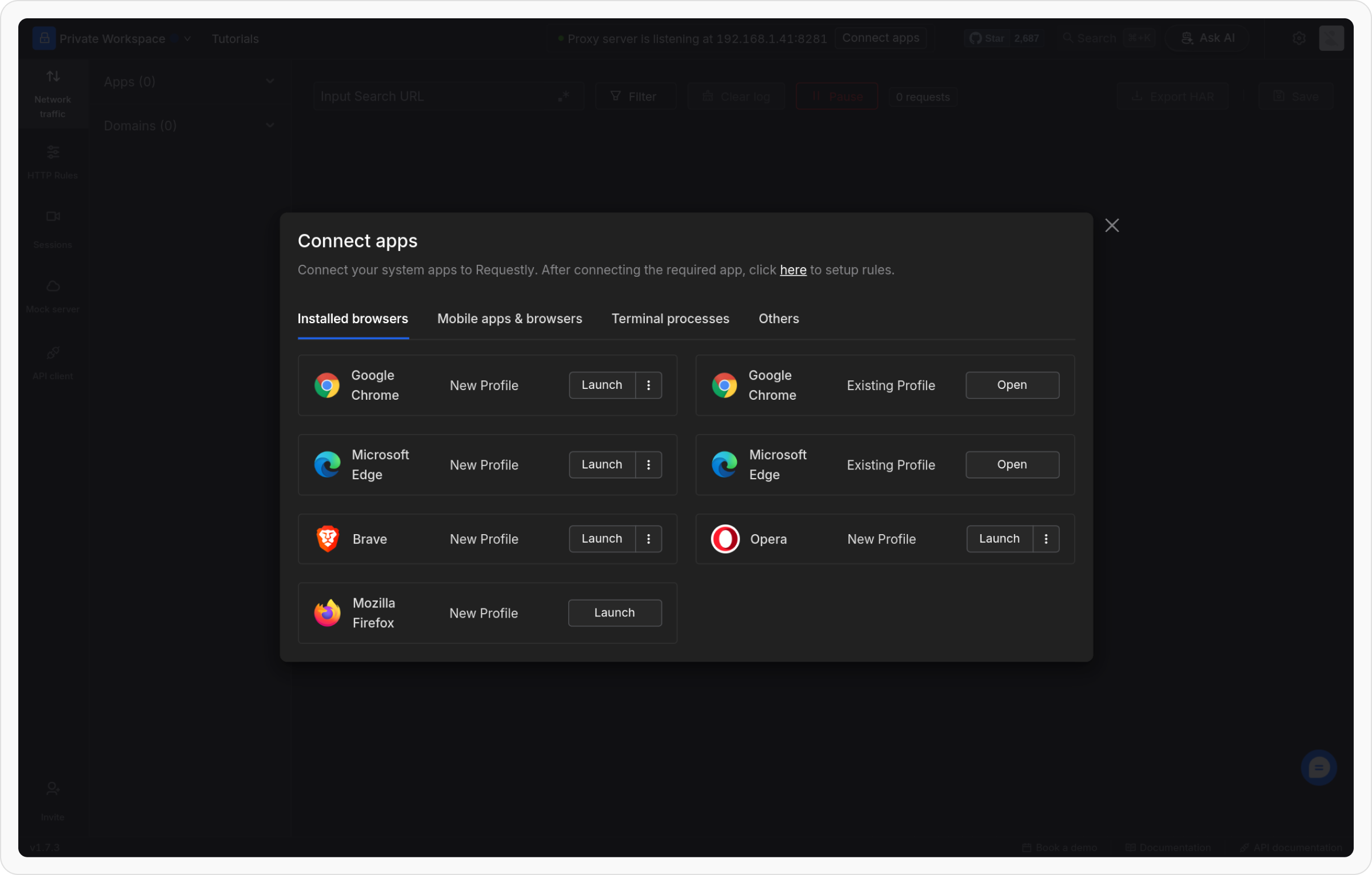

4
Capture and Save Traffic
As traffic gets intercepted, perform relevant activities. When you’re ready to save the session, click the 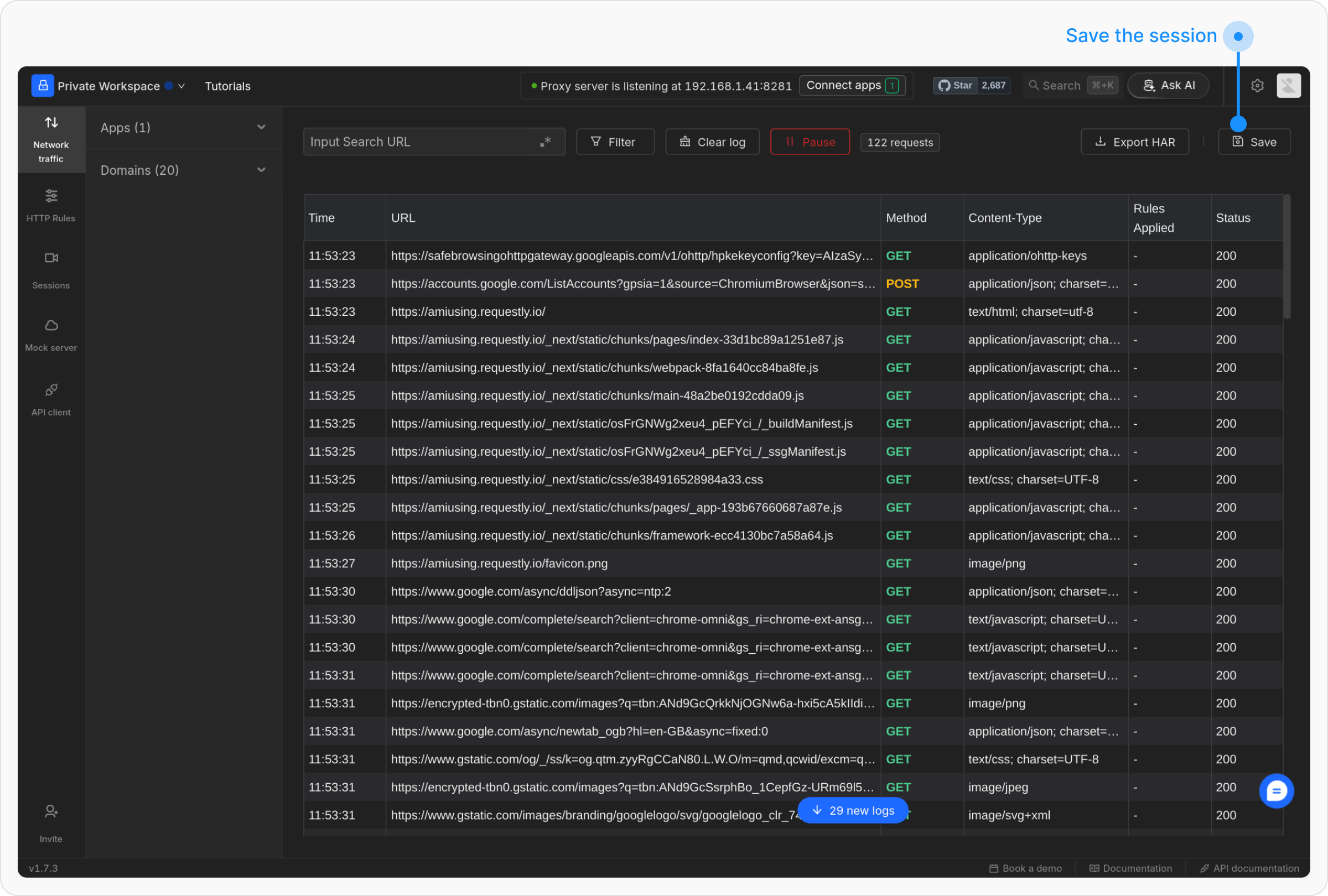
Save button.
Import a HAR File
Another method is to import a HAR file, which can be generated from various sources, including browser network sessions, other interceptors, or even Requestly’s traffic interceptor. Follow these steps:1
Export the HAR File
Generate and export the HAR file from your preferred source.
2
Import into Requestly
In the Requestly app, go to the Sessions tab and click Import HAR.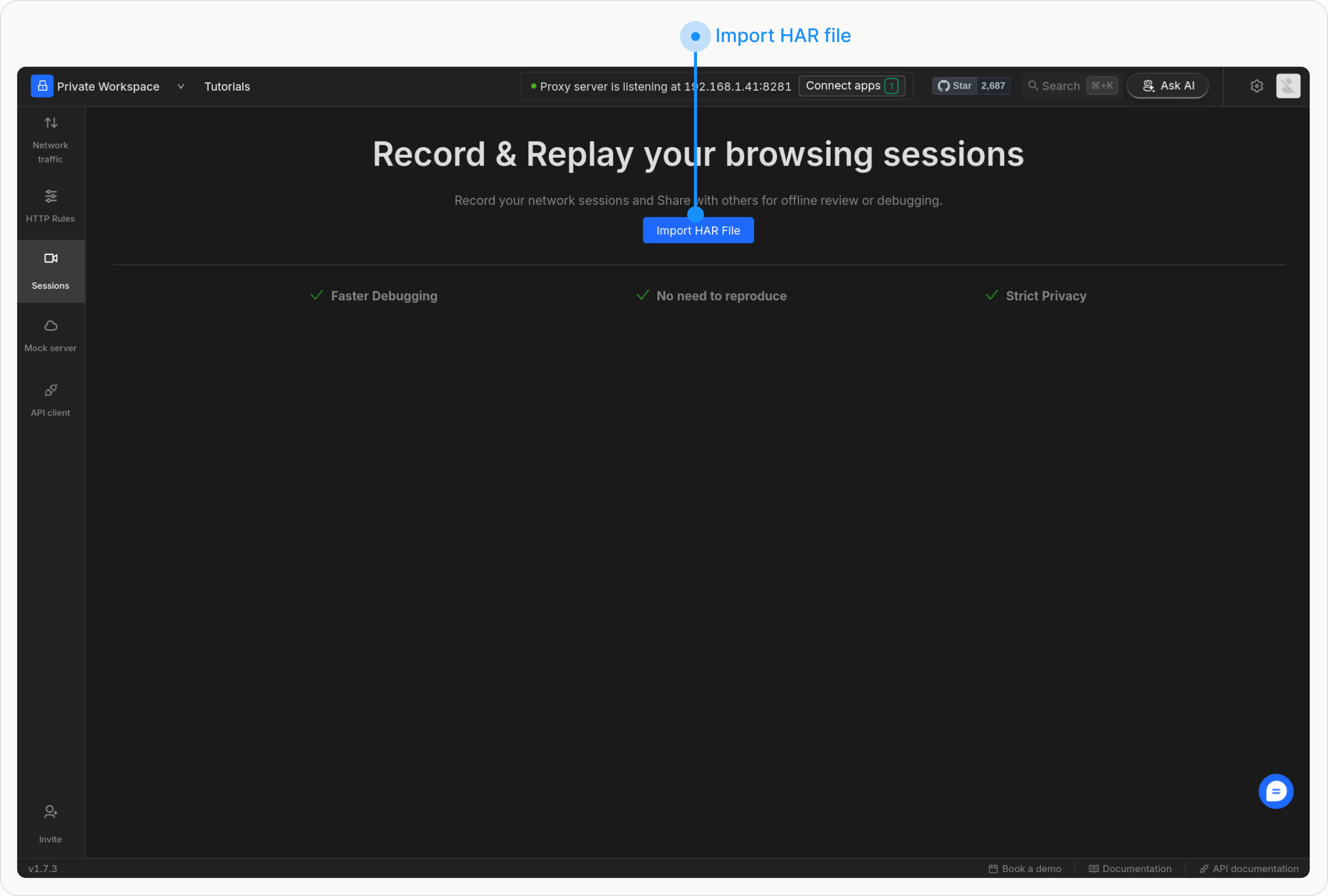

3
Analyze the Session
Once imported, you can start analyzing the session data.
Import a .rqly File
Requestly also supports importing its proprietary.rqly file format. This is useful for loading sessions captured from the Session Book.
Here’s how:
1
Download the Session
Navigate to the desired session in the web app’s Session and click Download.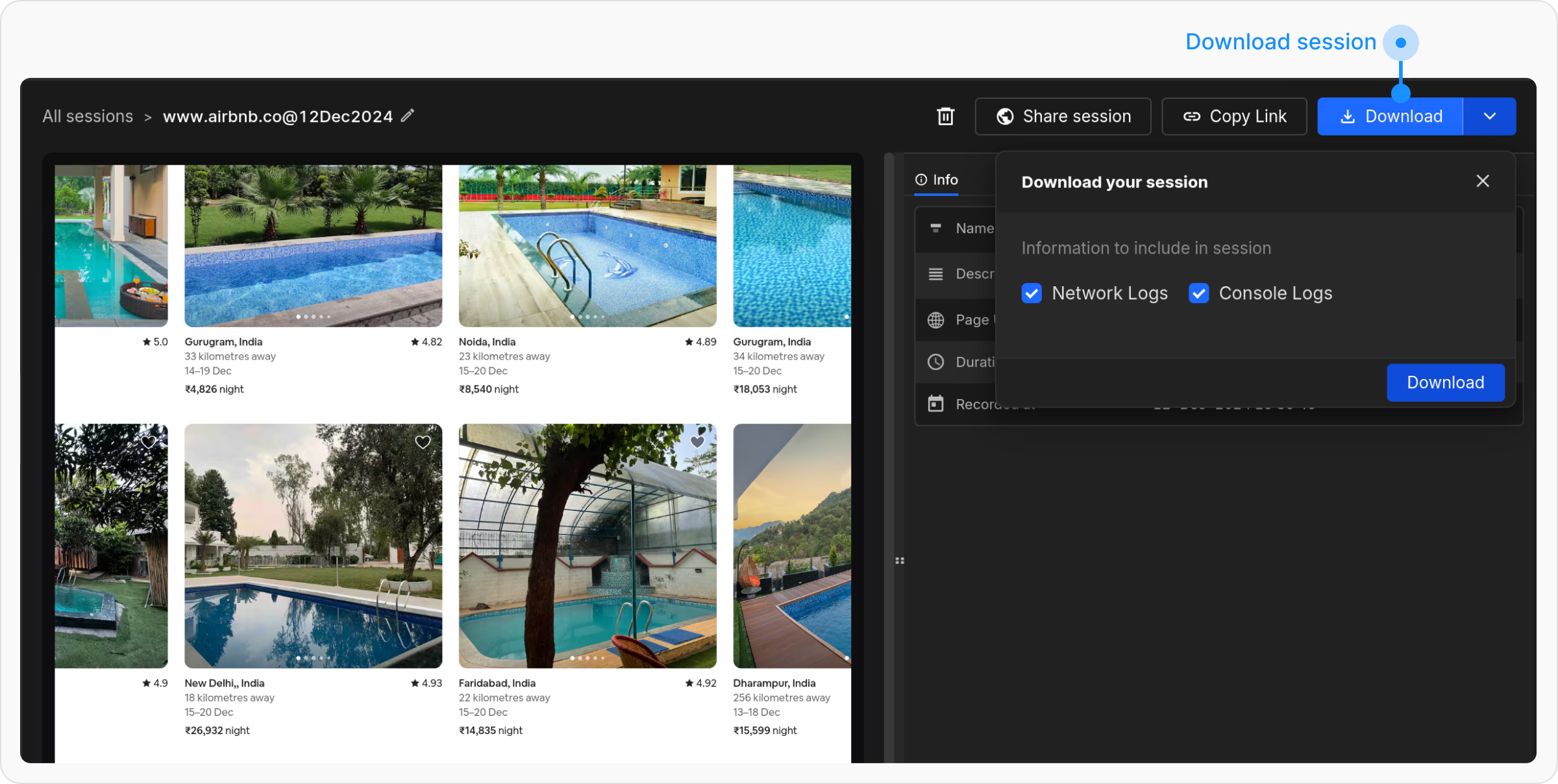

2
Import into Requestly
In the Requestly Desktop App, click Import .rqly File and upload the downloaded file.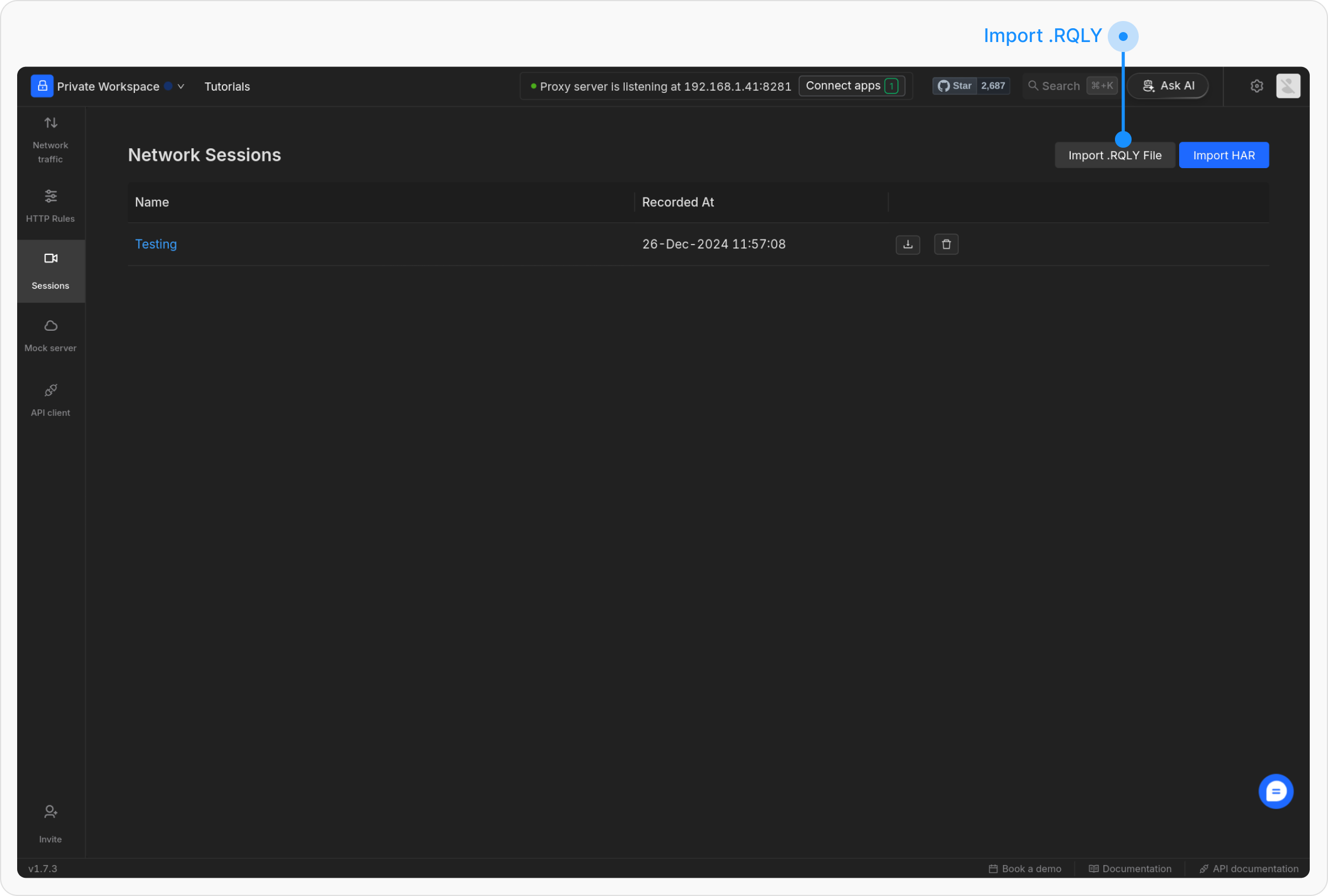

Session Interface
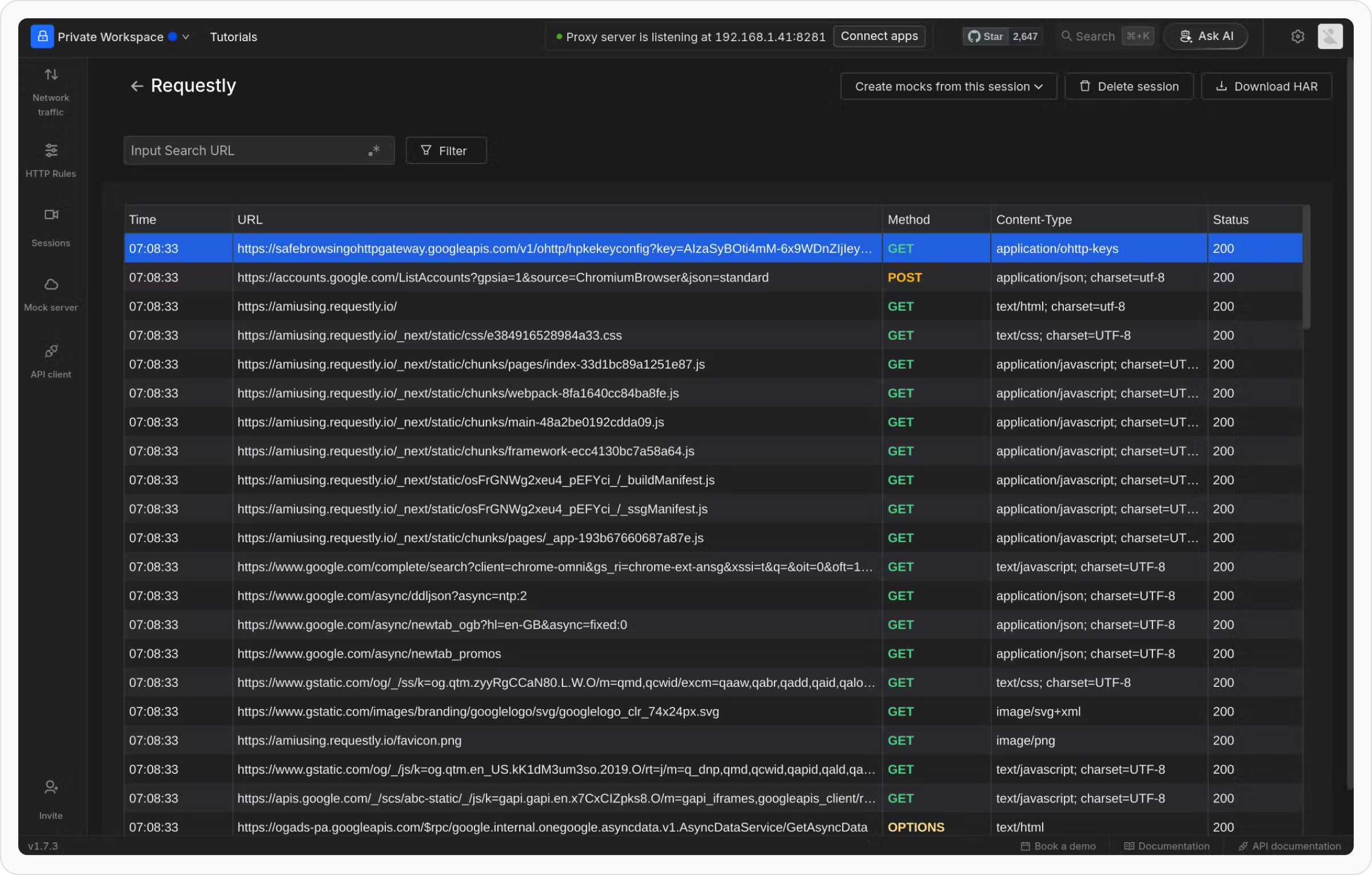
Search and Filters

- Search URL: Look for specific requests by entering part of the URL, a wildcard, or a regular expression.
- Filter by Method: Narrow requests using HTTP methods like GET, POST, or PUT.
- Filter by Status Code: Filter responses by status codes (e.g., 200 for success, 404 for not found).
- Filter by Resource Type: Focus on resource types such as CSS files, JavaScript files, or images.
- Modified Requests: Check this box to see only requests altered by your applied rules.
- Clear All: Reset all filters to view the full list of requests.
Traffic Table
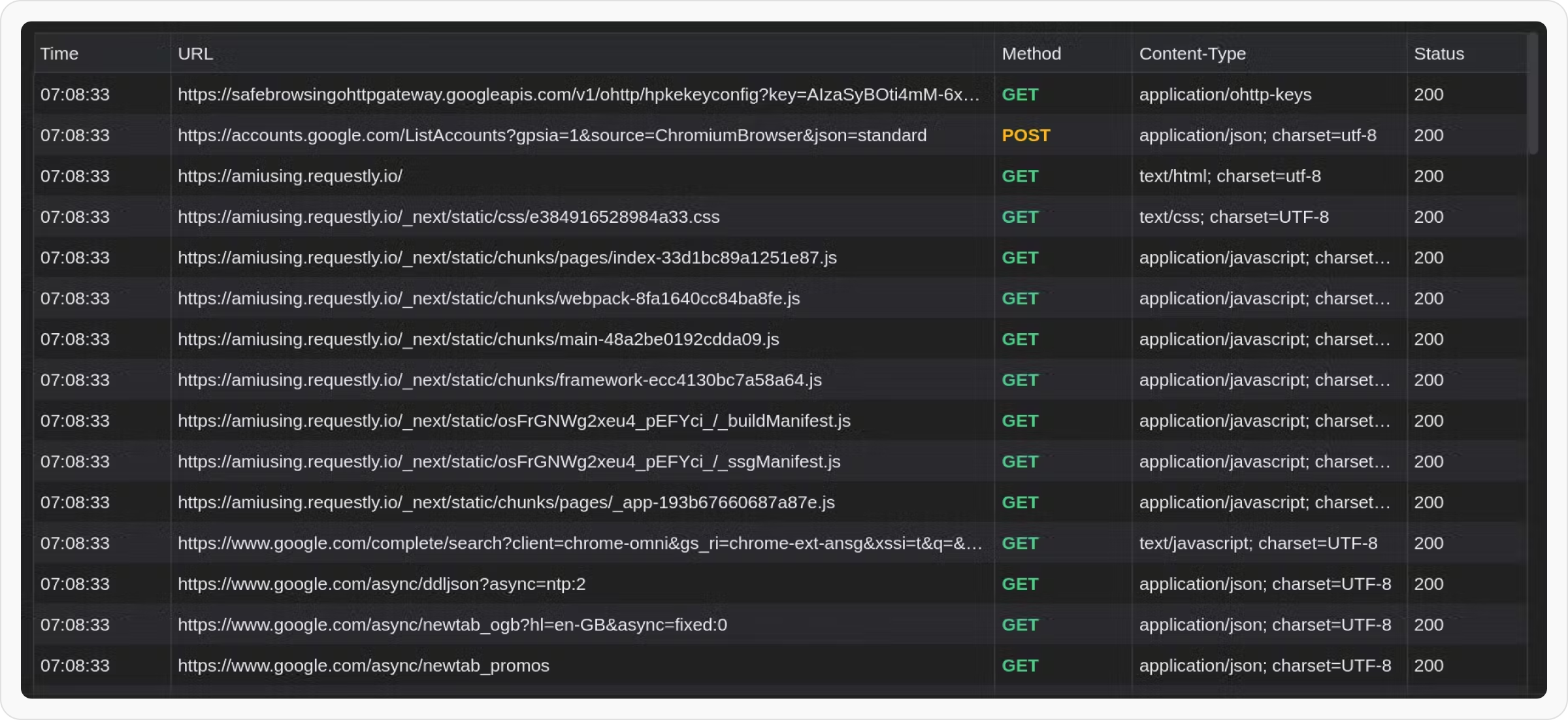
- Time: The timestamp of each request.
- URL: The accessed URLs for better visibility into endpoints.
- Method: The HTTP method used (e.g., GET, POST).
-
Content-Type: The type of content being transmitted (e.g.,
text/css,application/json). - Status: The HTTP response status code (e.g., 200, 404).
Details Section (Bottom Panel)

- Request Details: View the HTTP method, path, host, and port.
- Headers: Inspect request and response headers.
- Payload: Check data sent with the request (e.g., for POST requests).
- Body: Examine the response body.
- Preview: Render response content, such as HTML or CSS, if applicable
Action Buttons
- Create Mocks: Simulate backend responses for testing and development without relying on an actual server. You can also perform bulk mocking to create multiple mock responses at once, streamlining the testing process.
- Delete Sessions: Remove old or unnecessary sessions to keep your workflow organized.
- Download HAR Files: Export HTTP Archive (HAR) files to analyze network activity and debug issues easily.
Additional Features
Bulk Mocking
Create multiple mock responses at once to save time and simplify your testing. This feature lets you simulate different backend scenarios, speeding up both development and testing. With Bulk Mocking, you can quickly create mock responses for selected requests in a session, streamlining your workflow. Once your mocks are created, you can view and manage them easily. For more detailed instructions, check out our Bulk Mocking Guide.Saving and Sharing Sessions
You can keep your session data for later use or share it with others. Use the Export HAR option to download session data, which can be shared or re-imported into Requestly. To learn more, visit the Import/View HAR file page.Creating Rules from Captured Sessions
Requestly allows you to use captured sessions to create rules tailored to specific testing scenarios. This method helps replicate real-world conditions effectively. Here’s how you can leverage sessions to define rules: Popular Use Cases- Redirect Requests: Create rules to reroute specific URLs to alternative endpoints for testing purposes.
- Modify Headers: Adjust request or response headers to simulate various environments or configurations.
- Delay Responses: Introduce network delays to observe how your app handles slow response times.
1
Open Your Session
Open Your Session and Right-click any request from the traffic table.
2
Select a Rule Type:
Choose a rule type (e.g., Redirect URL, Modify Header).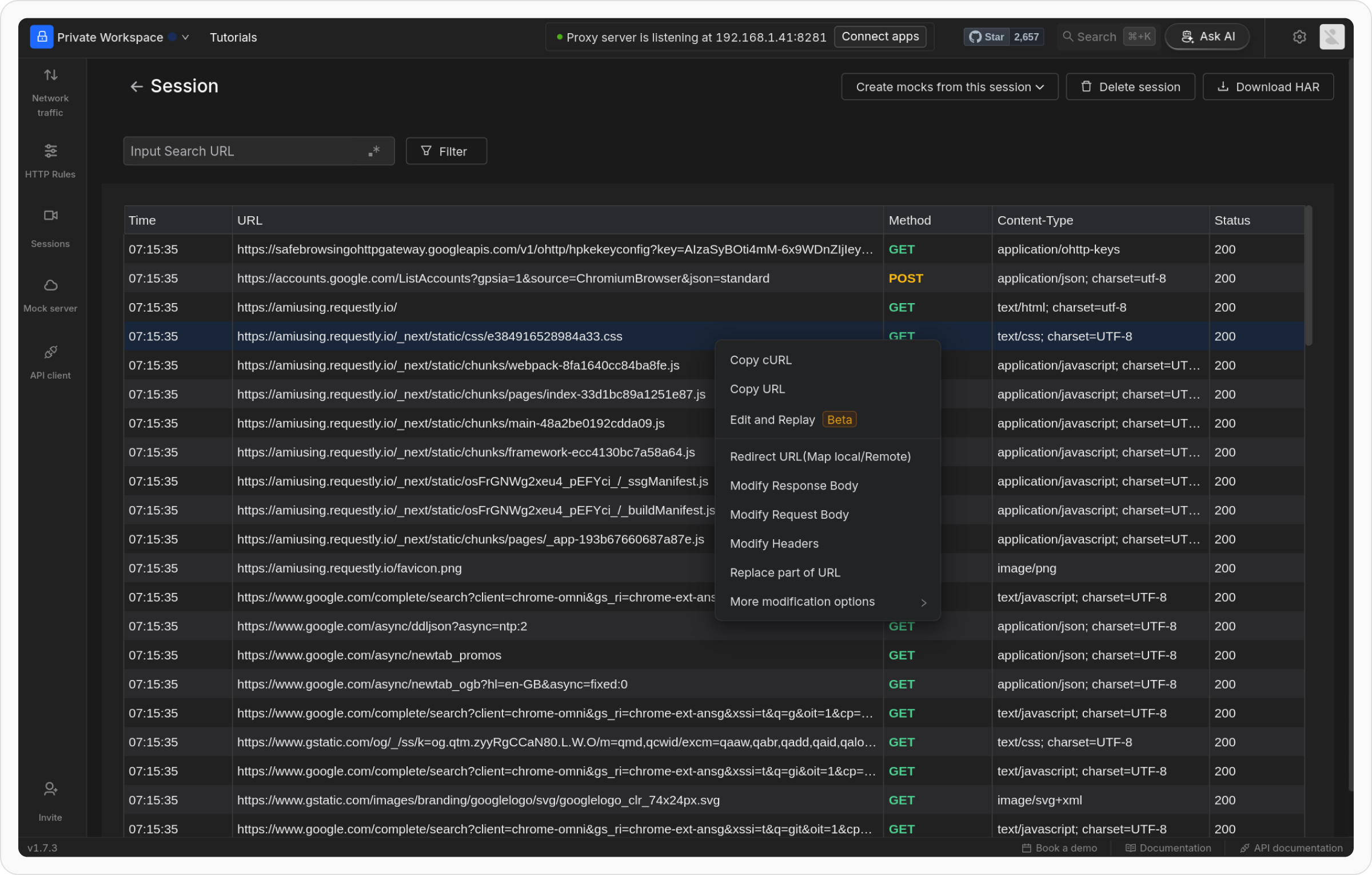

3
Configure the Rule:
Configure the rule as needed for your testing scenario.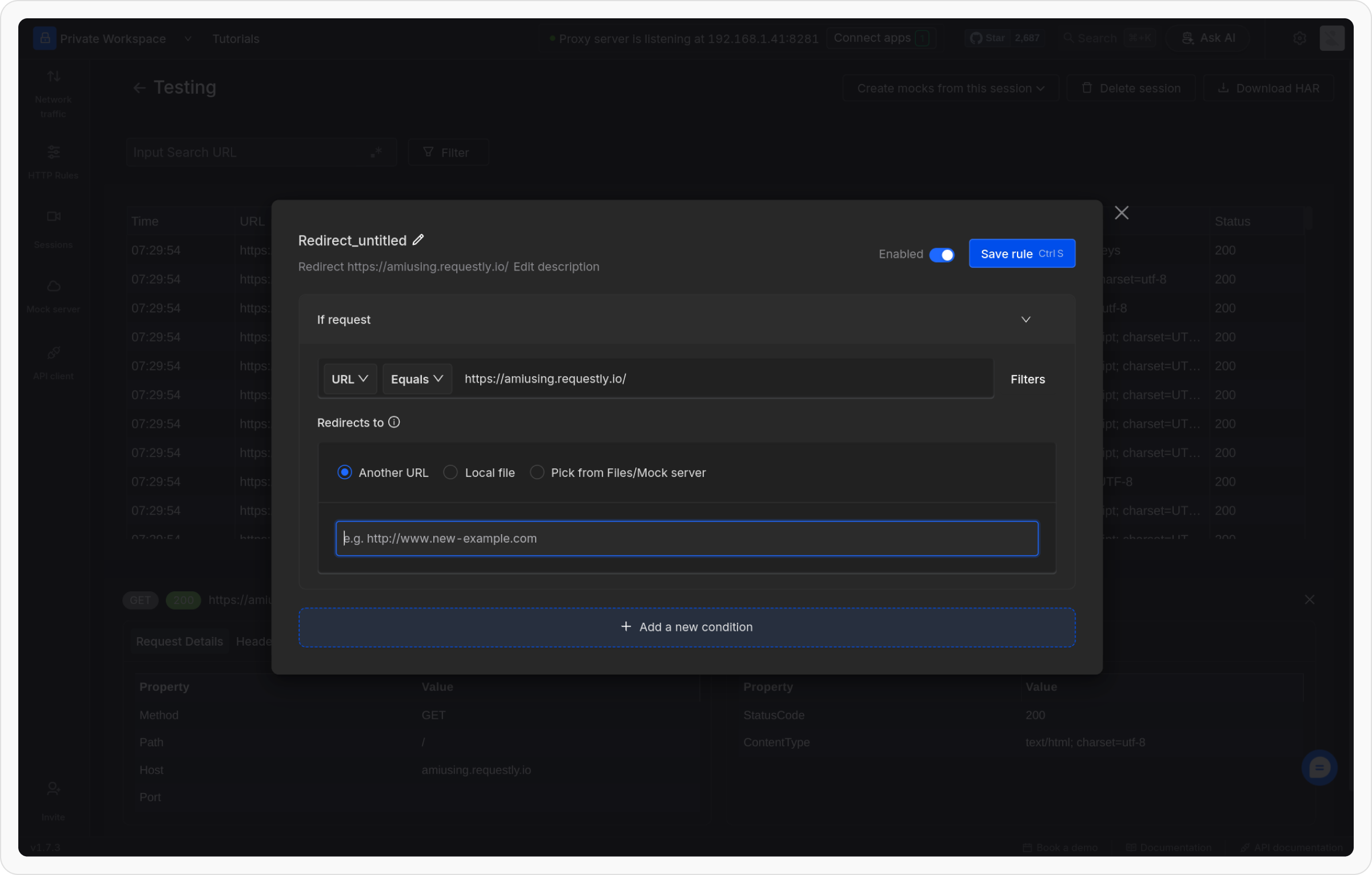

4
Save the Rule:
Click
Save to finalize and apply the rule.Edit and Replay
The Edit and Replay feature lets you send API requests to an endpoint and modify various parameters like headers, body, query parameters, and more. This functionality acts as an integrated API client within your sessions, making it easier to test and modify API requests directly.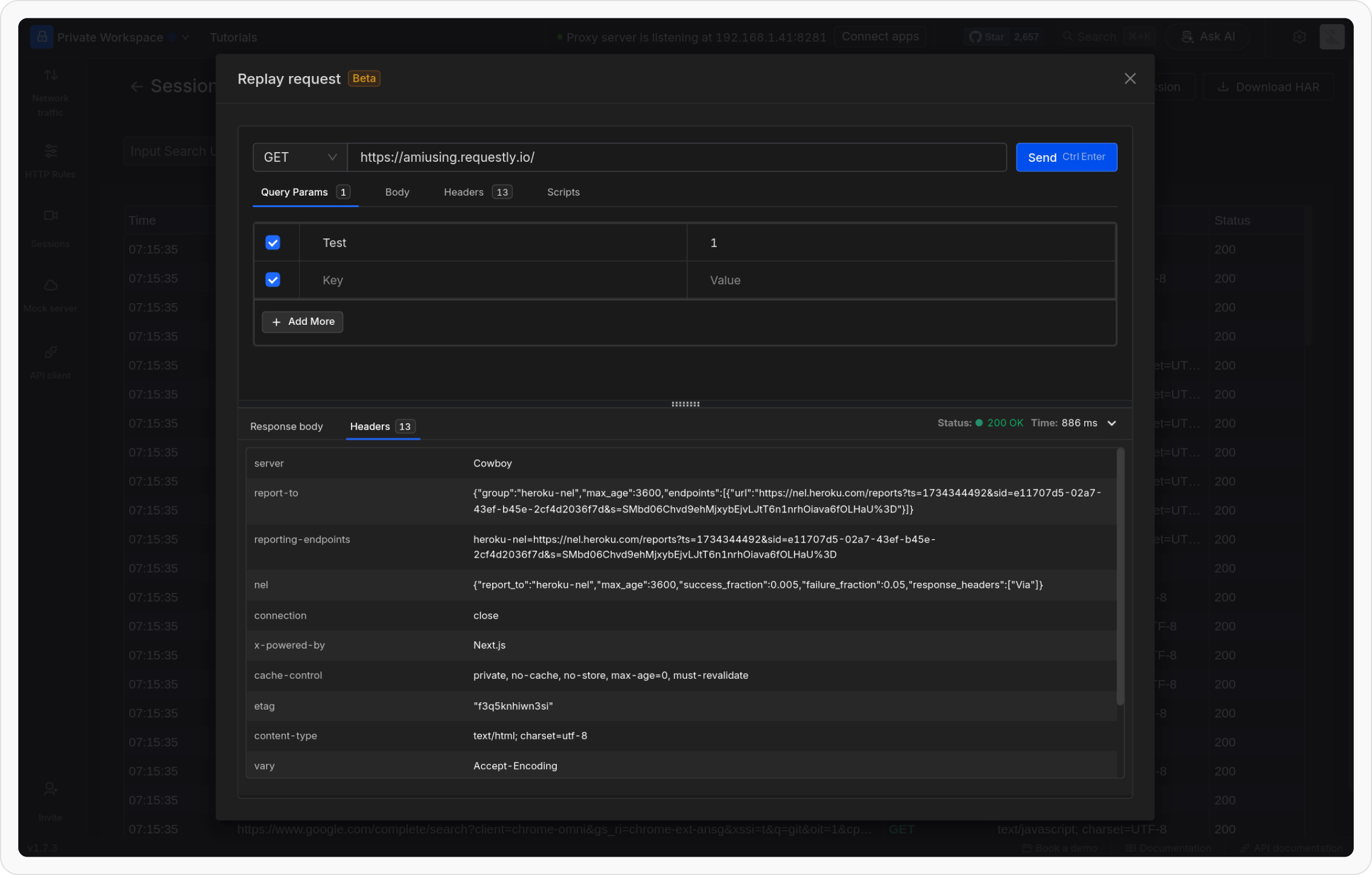
1
Select a Session
In your session, choose the interaction or API request you want to analyze. Right-click the session and click Edit and Replay.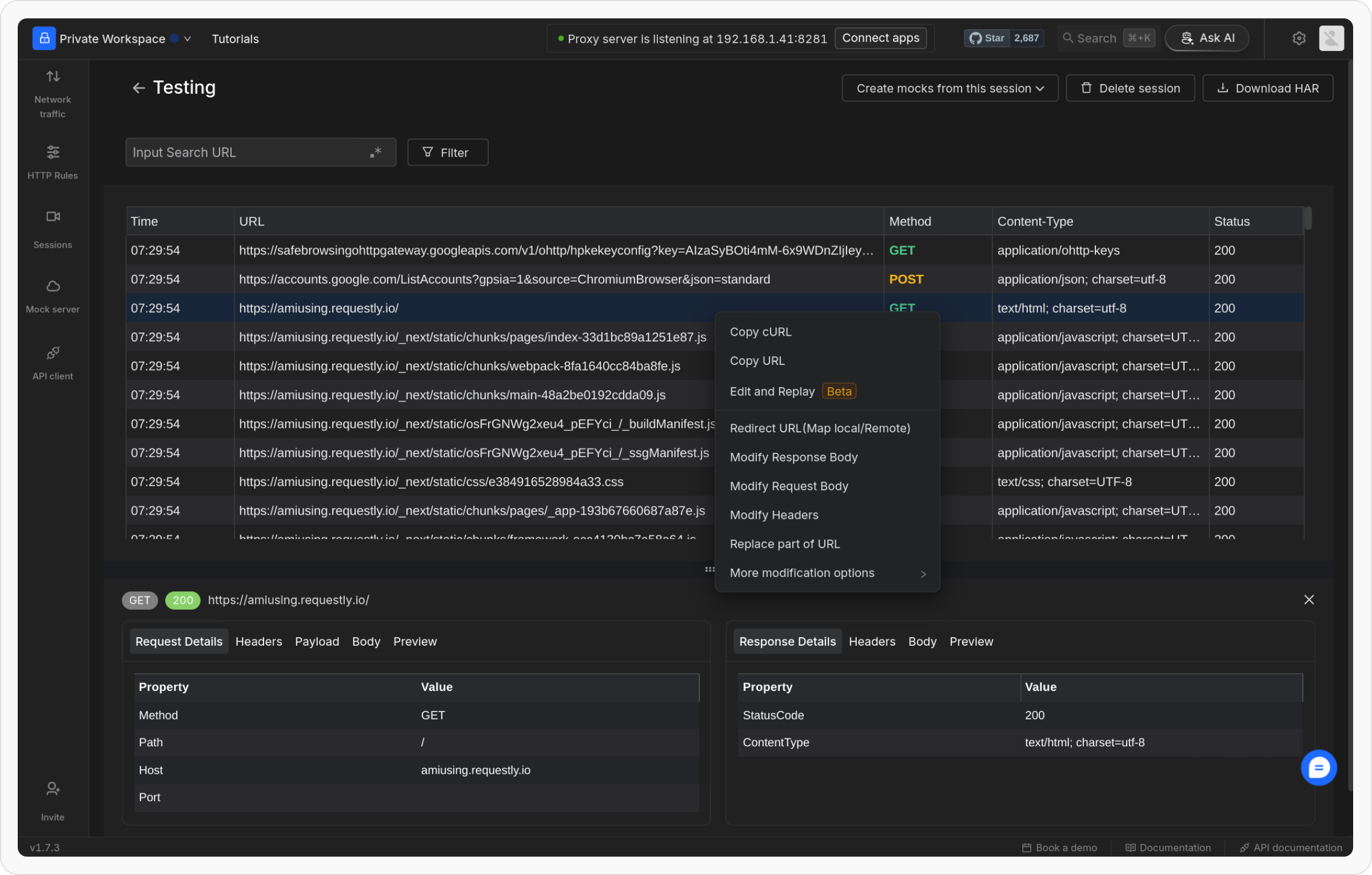

2
Analyze Session Data
Review the recorded parameters, including headers, body, and query parameters, to understand the request behavior.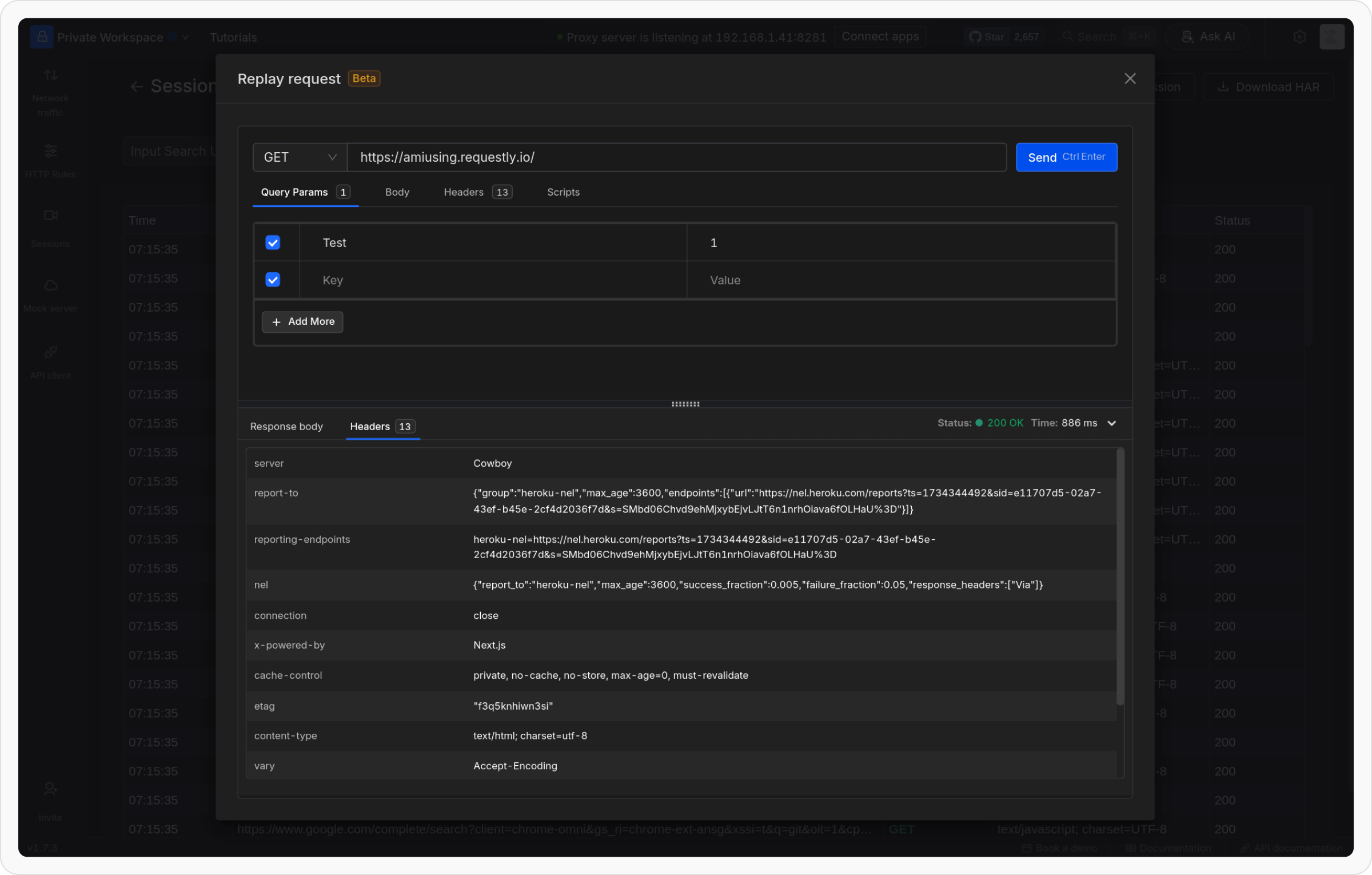

3
Replay and Debug
After analyzing the session, click the Send button to resend the modified request and debug the issue effectively.

